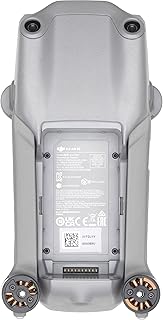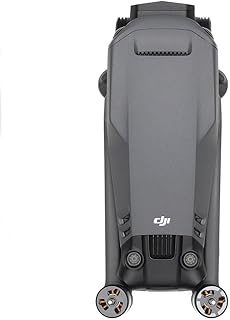RotorLogic Drone: A Practical Guide for Professionals
This guide provides a comprehensive overview of the RotorLogic drone, focusing on its features, applications, and practical usage for professionals in various industries.
1. Introduction to RotorLogic Drones
* Overview: Introduce the RotorLogic drone, highlighting its key features, specifications, and its manufacturer (if known).
* Target Audience: Explain who this guide is intended for, emphasizing its focus on professionals in specific fields.
* Benefits of RotorLogic Drones: Detail the advantages of using RotorLogic drones over other drone models.
2. Technical Specifications and Features
* Physical Characteristics: Describe the drone's dimensions, weight, and build material.
* Flight Performance: Discuss its maximum flight time, range, speed, and altitude capabilities.
* Payload Capacity: Highlight the maximum weight the drone can carry, and the types of payloads it can accommodate.
* Camera and Sensors: Explain the type of camera, its resolution, and any additional sensors (e.g., LiDAR, thermal) available.
* Software and Operating System: Detail the software used to control and manage the drone, including its features and capabilities.
* Battery: Discuss the battery life, charging time, and any available battery options.
3. Applications for Professionals
* Inspection and Maintenance: Explain how RotorLogic drones can be used for inspecting infrastructure like bridges, pipelines, power lines, and buildings.
* Surveying and Mapping: Describe how the drone can be utilized for creating detailed maps, 3D models, and terrain analysis.
* Agriculture: Explain how it can be used for crop monitoring, yield estimation, and precision farming.
* Emergency Response: Discuss its role in search and rescue operations, disaster assessment, and aerial reconnaissance.
* Construction: Describe how RotorLogic drones can be used for site monitoring, progress tracking, and volume calculations.
* Security and Surveillance: Explain how it can be deployed for perimeter monitoring, security patrols, and asset tracking.
* Other Applications: Mention any other specialized applications specific to the RotorLogic drone model.
4. Practical Usage Guide
* Safety Precautions: Provide a comprehensive list of safety guidelines for operating RotorLogic drones, including:
* Regulations and Laws: Highlight relevant aviation laws and regulations in your region.
* Flight Zones and Restrictions: Explain restricted airspace and areas where drone flights are prohibited.
* Weather Conditions: Discuss the importance of considering weather factors before flight.
* Flight Procedures: Outline recommended flight procedures for safe and effective drone operation.
* Flight Planning and Preparation: Explain how to plan your drone flight, including:
* Choosing a Flight Location: Selecting suitable and safe flight areas.
* Flight Path and Mission Planning: Setting the drone's flight route and objectives.
* Pre-flight Checks and Inspections: Conducting thorough pre-flight checks of the drone and its components.
* Operating the Drone: Provide step-by-step instructions for:
* Taking off and Landing: Demonstrate the correct takeoff and landing procedures.
* Controlling the Drone: Explain how to navigate and maneuver the drone using the remote control.
* Using the Camera and Sensors: Provide guidance on capturing images and videos, and utilizing other sensors.
* Data Collection and Management: Explain how to store, manage, and analyze data collected by the drone.
* Troubleshooting and Maintenance: Offer solutions for common drone problems, and provide instructions for routine maintenance.
5. Case Studies and Examples
* Real-world Success Stories: Showcase examples of how professionals have successfully used RotorLogic drones in their respective industries.
* Industry-specific Applications: Provide case studies demonstrating the benefits of using RotorLogic drones in specific sectors (e.g., construction, agriculture, security).
6. Conclusion
* Summary of Key Points: Briefly recap the key features, benefits, and practical applications of RotorLogic drones.
* Future of RotorLogic Drones: Discuss potential future developments and advancements in RotorLogic drone technology.
* Call to Action: Encourage readers to explore the potential of RotorLogic drones for their specific needs and to contact the manufacturer for further information or support.
7. Appendix
* Glossary of Terms: Define key terms related to drones and aerial technology.
* Resources and Links: Provide links to relevant websites, manuals, and training materials.
* Contact Information: Include contact details for the manufacturer or authorized distributors.
Note: This guide can be adapted and expanded upon to provide a more detailed and specific resource based on the particular RotorLogic drone model and its applications. You can also incorporate additional sections like "Choosing the Right RotorLogic Drone," "Integration with Third-Party Software," or "Drone Insurance and Liability."


